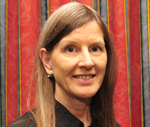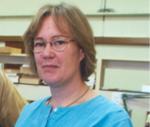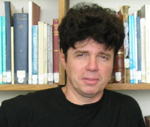Two women among trio of new Fellows
03 November 2008Vice-Chancellor Dr Max Price toasted a trio of new UCT Fellows on 16 October, two of them women.
Professors Vivienne Russell of the Department of Human Biology, Judith Sealy of the Department of Archaeology, and Igor Barashenkov of the Department of Mathematics and Applied Mathematics were inducted at the annual Fellows Dinner, the latter two in absentia. UCT Council established fellowships for members of permanent academic staff in recognition of original, distinguished academic work.
At the same occasion, Fellows Awards were presented to six academics younger than 40 who have made significant independent contributions to research in their field. This year's recipients were Dr David Braun of the Department of Archaeology, Dr Christopher Clarkson of the Department of Mathematics and Applied Mathematics, Dr Imraan Coovadia of the Department of English Language and Literatures, Assoc Prof Keertan Dheda of the Department of Medicine, Dr Anthony Figaji of the Division of Neurosurgery, and Dr Lindsey Gillson of the Department of Botany.

A neuroscientist, Vivienne Russell joined UCT in 1997 and was promoted to associate professor in 2001 and full professor in 2004. During the past three decades she has supervised several MSc and PhD students and published extensively on topics in the neurosciences. Russell's reputation rests on her pioneering work in developing an animal model for attention-deficit/hyperactivity disorder (ADHD). The first of a series of publications on ADHD in 1995 garnered 93 citations. In a ground-breaking paper published in Behavioural and Brain Function in 2006, she introduced a novel hypothesis - based on neuronal and glial energetics - for understanding ADHD. This paper drew a lot of attention, becoming the second-most-accessed paper from this journal. Russell has played a major role in promoting neuroscience training in Africa, by organising international neuroscience schools for postgraduate students. She serves on the School's board of the International Brain Research Organisation (IBRO), IBRO's Neuroscience Programme Network and the IBRO African Regional Committee, which organises neuroscience training in Africa.

UCT-trained, Judith Sealy obtained her PhD in archaeology in 1989. She is also fully trained in analytical chemistry. Her research speciality involves the application of chemical techniques to solving problems in prehistory. Her major research interest has been stable light-isotope analysis of skeletal material to study the diets of Middle and Late Stone Age people in South Africa, especially those who included marine foods in their diets. In the process, she produced ground-breaking evidence that coastal hunter-gatherers were territorial, with restricted access to specific marine resources. This challenged the prevailing views about hunter-gatherers, which were based on studies of Kalahari people. She published these views in Current Anthropology, initially in 1986, with a much fuller account in 2006. During her year at Oxford in 1985, she produced the first accelerator radiocarbon dates in South African archaeology, and did the laboratory analysis for the first radiocarbon date of pigment from a rock painting. This technique was immediately used by colleagues at the Oxford laboratory to date many of the famous rock paintings in Europe, including those at Lascaux. Last, but not least, the simplest and most popular method for the extraction of collagen from bone is widely known as "the Sealy method".

Igor Barashenkov obtained his MSc (1983) at Moscow State University and his PhD from the Joint Institute for Nuclear Research in Dubna, Russia (1989). He came to UCT in 1992 as a senior lecturer in the Department of Mathematics and Applied Mathematics. He was appointed professor in 2002. His research centres on solitons, particle-like nonlinear waves arising on the surface of some fluids, in magnetic crystals, superconductors, fibre optical transmission lines, laser cavities, clouds of boson condensates, and other nonlinear media. Among his main achievements are the discovery of a new type of soliton with unusual properties (the so-called solitonic bubbles); the first demonstration of the stability of gap solitons in optical gratings; the discovery of the remarkable complexity of solitons in resonantly-forced dissipative systems; the explicit construction of topological solitons in two dimensions; and the prediction of a stable two-dimensional soliton on the surface of a ferrofluid. For his research on solitons, he was awarded an A rating by the National Research Foundation and the Harry Oppenheimer Fellowship by the Ernest Oppenheimer Memorial Trust in 2004.
 This work is licensed under a Creative Commons Attribution-NoDerivatives 4.0 International License.
This work is licensed under a Creative Commons Attribution-NoDerivatives 4.0 International License.
Please view the republishing articles page for more information.










